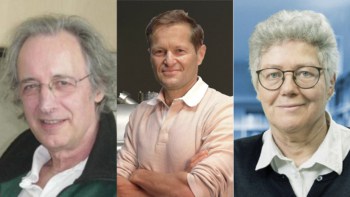
Ultrasound waves in air have been used to manipulate powerful laser beams – in a first claimed by researchers in Germany. The team’s acousto-optic Bragg grating could lead to new and useful ways to manipulate light.
From gravitational wave detection to semiconductor fabrication, much of modern science and technology relies on the precise control of laser light.
“Optical elements like gratings, lenses or modulators have always formed the basic ingredients behind optical devices including lasers, microscopes and atomic clocks, which have enabled many breakthroughs in various scientific fields,” explains Christoph Heyl at DESY, who led the research.
However, demands for higher power, shorter pulses and tighter control over the properties of laser light are pushing even the most advanced optical elements beyond their limits. Today, researchers are having to adapt their methods to avoid light-induced damage to optical components, and mitigate against unwanted absorption and nonlinear effects that degrade the quality of laser light.
Density manipulation
Now Heyl and colleagues have taken novel approach to controlling light that promises to avoid some of the problems associated with conventional optical components. Their technique involves manipulating the density of air at length scales on par with the wavelength of light.
“We employ highly intense ultrasound fields to control and redirect laser beams under a small angle directly in ambient air, employing the principle of acousto-optic modulation,“ Heyl explains.
In their experiment, the researchers mounted an ultrasound transducer opposite a planar sound reflector. This establishes a high-pressure standing ultrasound wave in the air gap – a wave that features sharp, periodic variations in air density. The index of refraction of air increases with density, so the standing wave acts as a Bragg grating that can deflect light using optical diffraction. While this technique is used to create gratings in solid media such as glass, the team says that this is the first time it has been done using air.
To use their grating, Heyl and colleagues placed a pair of opposite-facing mirrors perpendicular to the standing ultrasound wave. A beam of light enters the device and is reflected back and forth many times before exiting the device. This increases the distance that the light travels through the Bragg grating, enhancing the diffraction effect.
High-power handling
The team found that about 50% of the incident light was deflected and the rest was transmitted – with the quality of the incident laser light preserved. The team says that numerical simulations suggest that this percentage could be increased significantly in the future. What is more, the grating can handle gigawatt laser pulses that are about one thousand times more intense than the upper limit of devices that employ the acousto-optical modulation of solid materials.

Tiny ultrasound detector achieves super-resolution imaging
“Our approach provides a bypass to the restrictions that solid media usually impose: including orders of magnitude lower dispersion, higher peak powers, and wider wavelength ranges,” explains team member Yannick Schrödel, who is a PhD student at DESY.
Based on these results, the team predicts a diverse array of future applications for their acoustic optical Bragg grating. “Our method provides direct routes to novel optical amplitude and phase modulators, switches, beam splitters and many more elements, directly implemented using gas-based gratings,” says Schrödel.
The team is also looking forward to the development of other new technologies for manipulating light. “In addition, more advanced optical elements could be realised,” Schrödel continues. “This could enable exciting new directions for ultrafast optics, and other fields which face limits in optical power and spectral coverage.”
The acousto-optic Bragg grating is described in Nature Photonics.



